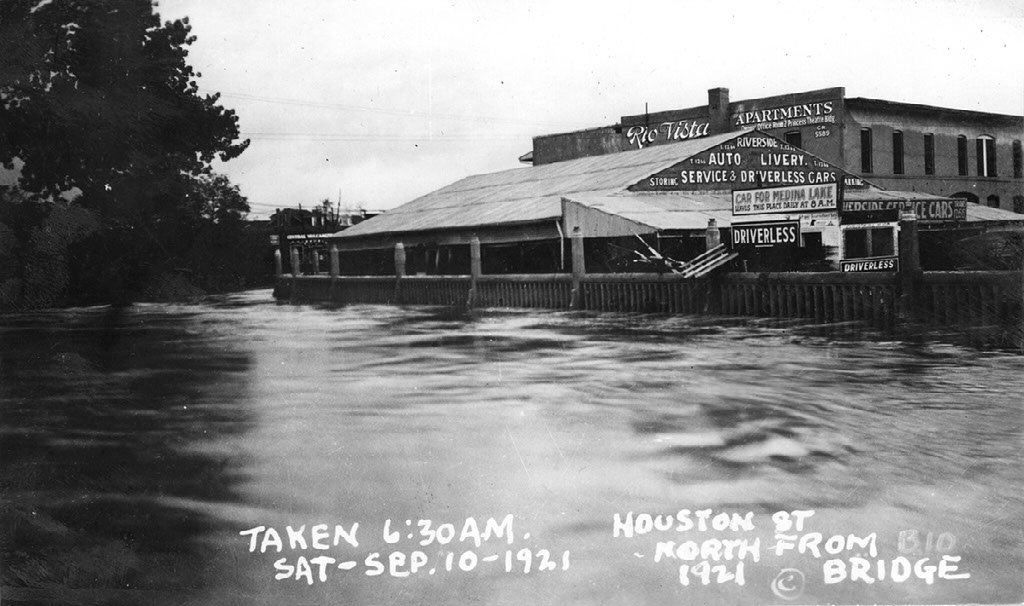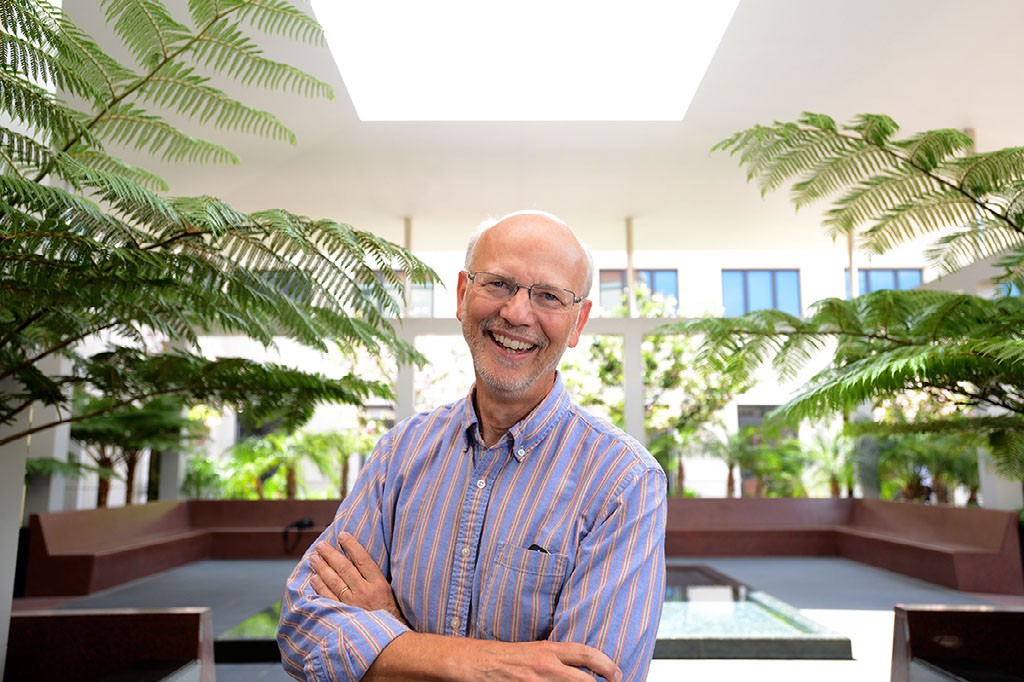In his new book, Char Miller ’75 tells the story of a historic flood that sparked a Latino environmental movement.
One hundred years ago, on September 9, 1921, a tropical depression stalled just north of San Antonio, Texas. A downpour of water soon overwhelmed the city’s winding network of creeks and rivers. Deadly floodwaters swept through the city. While a wall of water caused considerable damage to the central business district on the city‘s North Side, West Side residents, mostly Latinos who lived in neighborhoods without adequate protection or city services, suffered the most. The flood took hundreds of lives across central Texas and destroyed the hopes and dreams of thousands.
Decades later, a community once ignored by the powerful monied elite came together to hone their anger and frustration into grassroots activism that gave them a voice and the power to improve their quality of life.
Their experiences and the lessons they learned now inform and inspire other communities to work towards environmental justice. It also inspired Char Miller ’75 to write a book.
Miller, the W.M. Keck Professor of Environmental Analysis and History at Pomona College and director of the Environmental Analysis Program at The Claremont Colleges, has just released West Side Rising: How San Antonio’s 1921 Flood Devastated a City and Sparked a Latino Environmental Justice Movement.
Miller was a longtime San Antonio resident and professor of history at Trinity University from 1981 to 2007. While his scholarship dealt mostly with intellectual and cultural history, he spent much of his free time walking, driving, and thinking about the city. It was important for him to figure out the relationship of various sectors of the city, which is still highly segregated. “Why is this still happening in the late 20th century,” he asked. These field trips, with friends and on his own, were the genesis of his book.
What Miller learned, and explains in West Side Rising, is that it took 50 years of upheaval and frustration for significant change for the West Side. And the people made it happen.
After the flood, the city turned its back on the poorer side of town and poured money into the commercial district; political elites urged construction of the Olmos Dam at a cost of $1.6 million, an action that eventually helped create San Antonio’s famed River Walk. Even West Side deaths were downplayed or deliberately miscounted. The count varied from the city’s insistence that 51 people had died to a newspaper report that “a few people died.” Based on extensive research, Miller puts the figure at 80 or more.

Finally, in the mid-1970s, the Communities Organized for Public Services (COPS), a West Side grassroots organization, launched a successful protest that brought much-needed flood control to often inundated neighborhoods. Eventually, the county and city took inventories of properties that lay within the floodplains and purchased them at assessed value from willing sellers at a cost of more than $9 million. Miller says that this was a far cheaper and much more environmentally sensitive tactic than building additional dams, concreting riverbeds, and armoring streambanks. “It gave space to nature while preserving the community’s wellbeing,” he writes.
This upheaval, along with COPS’ emergence as a power broker, disrupted Anglo domination of the political landscape to more accurately reflect the city’s diverse population.
“Their frustration was targeted in a way that was eye-opening for me,” says Miller. “I had done some grassroots activism in politics, but I had never seen a conscious and deliberate movement like this. The language they used was to ‘act in cold anger.’
“I prefer cold anger because it’s focusing. It also means you go into the political arena, and you’re there for a particular reason—and that requires you to assume that those you are confronting have the capacity to change.”
Miller points out that the leaders came from within the community, not from outside, and that’s why they succeeded. They included priests and parish and community leaders, many of them women.
Ernie Cortes, a prominent grassroots organizer, was the initial leader of the coalition. He went to unions to discover who were the most engaged in social issues. He talked to parish leaders. “They might have been organizing for God, but the same principles applied,” says Miller.
In the book, Miller uses the term “streetscape environmentalism” to describe the concerns of West Side leaders. “They were talking about streets that were literally unpaved, about potable water, which they did not have, sewers which they didn’t have, flood control, and obviously better housing and better schooling. I thought, this is a constellation of social issues that are actually environmental,” he says.
It wasn’t the environmental movement he recognized, one that protected parks, recreational areas, and wetlands. It was a much more politically driven, locally derived, and social justice movement – and all the language was environmental.
 Char Miller ’75, W.M. Keck Professor of Environmental Analysis and History at Pomona College and director of the Environmental Analysis Program at The Claremont Colleges
Char Miller ’75, W.M. Keck Professor of Environmental Analysis and History at Pomona College and director of the Environmental Analysis Program at The Claremont Colleges As Miller did research for West Side Rising, he was also working on a biography of Gifford Pinchot, the first chief of the U.S. Forest Service and governor of Pennsylvania in 1930.
“He and his wife coined a term called ‘human conservationism,’” which meant streets, housing, work, air and water quality,” says Miller. “I thought, this thing’s got deep roots. It’s coming from the needs of the community. That’s the thing COPS really made clear: that you assess what the community needs—flood control, streets, housing, all of this—and those become your targets because they’re local.
“It’s how and where people live. And why should they endure the things they do when there are better ways of living – safer, healthier. It was impressive watching them function.”
Miller draws on the struggles and the successes of West Side activism in his classes at The Claremont Colleges. In his Environmental Analysis class, EA 20, he says the title “Nature, Culture and Society” allows him to address essentially anything.
“It is a course about environmental justice, broadly conceived. We look at housing, architecture, urban planning, organic farming, and we look at various places where these injustices, such as food insecurity, air quality—all are bound up with social structures. The goal is to give students a sense of how to think about these issues theoretically, but also in place-based ways.”
Miller hopes that his students and others who read West Side Rising recognize that the built landscape is a human construction: where we live, the houses, the streets, the parks, even the air we breathe and the water we drink. And when there are inequities, as there are in every city in terms of who gets parks and who doesn’t, who has access and who doesn’t, whose air is of poorer quality, who is disproportionately bearing the burden of whatever policy decisions have been made—the conscious actions of politicians and others to produce these inequalities can be changed.
“That is what COPS has shown us,” says Miller. “You can jump into the floodwaters—political or literal—by organizing across the community to ensure that the community has a powerful voice in determining the conditions under which it lives. That’s pretty rudimentary on one level, but also extraordinarily necessary. It’s also ennobling.”
Ernie Cortez eventually moved to Los Angeles to replicate in East LA the same things he had done in San Antonio. Others went to Tucson, Phoenix, Chicago, and other places. “The tools they invented in San Antonio could be transferred, but you’d have to figure out what the new conditions are,” said Miller. “It’s that sort of human creativity that weirdly the flood of ’21 and subsequent ones unleashed.”
Miller is a passionate advocate for environmental activism who emphasizes hope over optimism. He references novelist Barbara Kingsolver’s reliance on hope as armor. “You put it on every day when you go out to change the world,” he says. “You don’t expect that things are going to change, as optimism does. You have to get in and make them change.”
He sees that kind of hope in an environmental justice movement whose rise to power had its origins in a devastating flood 100 years ago and in the ongoing efforts to honor those who died in the flood. A gravestone restorer who had heard of West Side Rising recently emailed Miller a photograph of a gravestone in San Fernando Cemetery that he had just restored. Miller didn’t recognize the names. They weren’t on the list he had compiled of the confirmed dead and missing.
“How many more are there?” asks Miller. “They may have been among the missing who weren’t identified as missing, but the family remembered them and put up a marker. It’s an unending story. But I figure that if I’m going to write about this flood, I have to do justice to those who disappeared here, who died.”
Miller will visit San Antonio in the near future and will go to the cemetery where most West Side people who died in the flood are buried. He plans to pay tribute to each person, name by name.